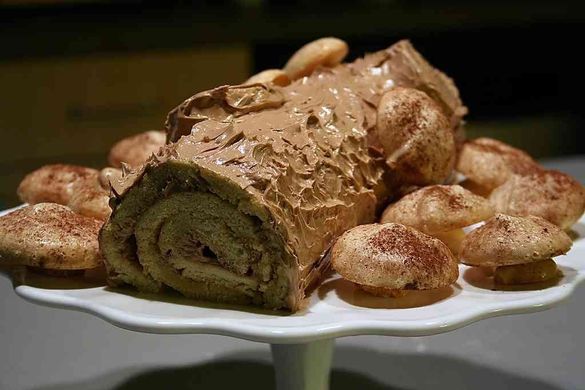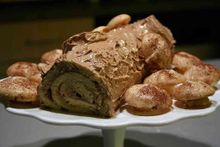 10 Dec 2016
10 Dec 2016
Corsicans delight in sharing their way of life with visitors to the island with its rich flavours, full-bodied wines, fine gastronomy, foraging, farming, and fishing traditions. Corsica has maintained many of its gastronomic traditions, with Christmas cuisine playing an important role in the life of an island that holds no less than six Christmas markets. Visitors with discerning palates will appreciate the quality of dishes produced according to traditional methods from a land renowned for its sweet chestnuts, charcuterie, sea food, creamy cheeses and wines. Why not try Corsican Chestnut Yule Log for your Christmas pudding (recipe below) this year?
Christmas markets in Corsica start in November and run right up until 31 December. Those open in December include Calvi (1-31 December), Ajaccio (3-24 December), Bastia (16-23 December) and Ile Rousse (16-20 December), so still there's time to hop over for a few stocking stuffers or Christmas ingredients.
Visitors spending a bit of time on the island during the festive season will have a chance to try the island's traditional sweet chestnut flour, a natural product that can be found in numerous local dishes, such as the famous “polenta” often served at Christmas and New Year.
This time of the year also sees a wide offering of local charcuterie such as the flavoursome prizuttu (cured ham) or the famous figatellu sausage, which is perfect grilled over the fire on a cold winter's day. Produced from pigs grazing freely in oak and sweet chestnut forests, Corsican charcuterie is among the best in the world and best enjoyed with a glass of local wine such as the Cap Corse muscat or Patrimonio red wine.
The island's cheeses are just as delicious and during the winter the brocciu cheese -made from goat and ewe's milk - is used in savoury recipes such as stuffed meat and vegetables and sweet dishes such as fiadone and ambrucciata (types of Corsican cheesecake).
No Christmas celebrations would be complete without abundant platters of Corsican oysters and sea urchins. Whereas Atlantic oysters take three years to reach a weight of 90g, the Corsican variety grows very quickly and can be eaten after only 12 or 14 months thanks to very specific types of planktons found in the island's lagoons making for a very singular “nutty” flavour.
To make a change from the traditional English Christmas Cake or pudding try traditional Corsican Chestnut Yule log:
« Ceppu di Natale Castagninu »/ Chestnut Yule Log
Preparation time: 2 hours
Ingredients: 1kg chestnuts- 300g chocolate-100g butter-1 tablespoon sugar
Using a knife, make a cut at either end of the chestnuts and boil them for 3 minutes. Drain and remove the skin from the chestnuts. In a casserole dish, incorporate the milk and the sugar, followed by the peeled chestnuts. Cook for 30min over a gentle heat.
Pass the contents of the casserole dish through a food mill and mix with the butter. Melt the chocolate in a casserole dish over a gentle heat and add 2 tablespoons of water.
Pour the chestnut mix into the chocolate and carefully combine. Pour the mix onto a sheet of foil, fold in two and fold up the edges to create a type of roll shape. To strengthen the foil sheet, surround it with a sheet of card.
Put everything in the fridge for 5 hours. Once the log has hardened sufficiently, remove the foil and put the log in a cool place for 1 hour prior to serving.
For more information about traditional recipes to celebrate Christmas the Corsican way, visit: www.visit-corsica.com/en/Explore/Our-holiday-ideas-all-year/The-best-of-winter/What-Corsican-Christmas-recipes-will-you-choose
~ENDS~
For more information and upcoming press trips contact:
Alison Cryer or Sebastian Sarrasin at Representation Plus
E: alison@representationplus.co.uk / sebastian@representationplus.co.uk
T: 0208 877 4523



